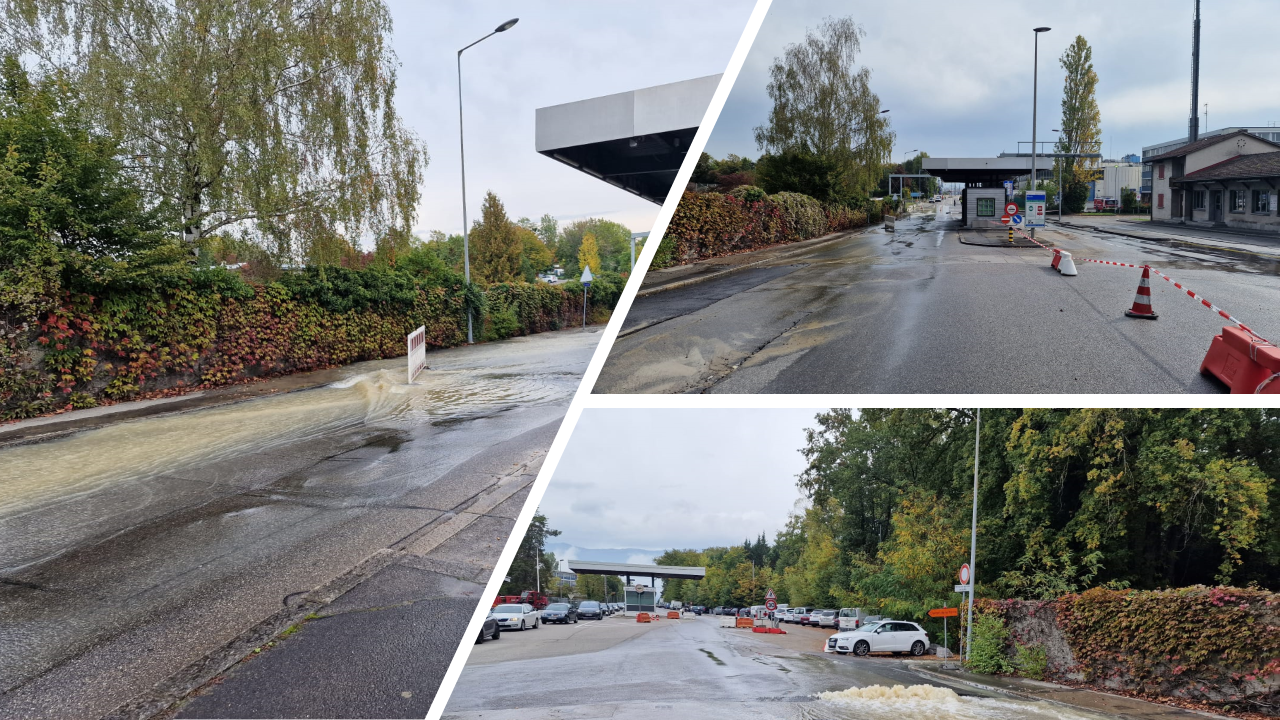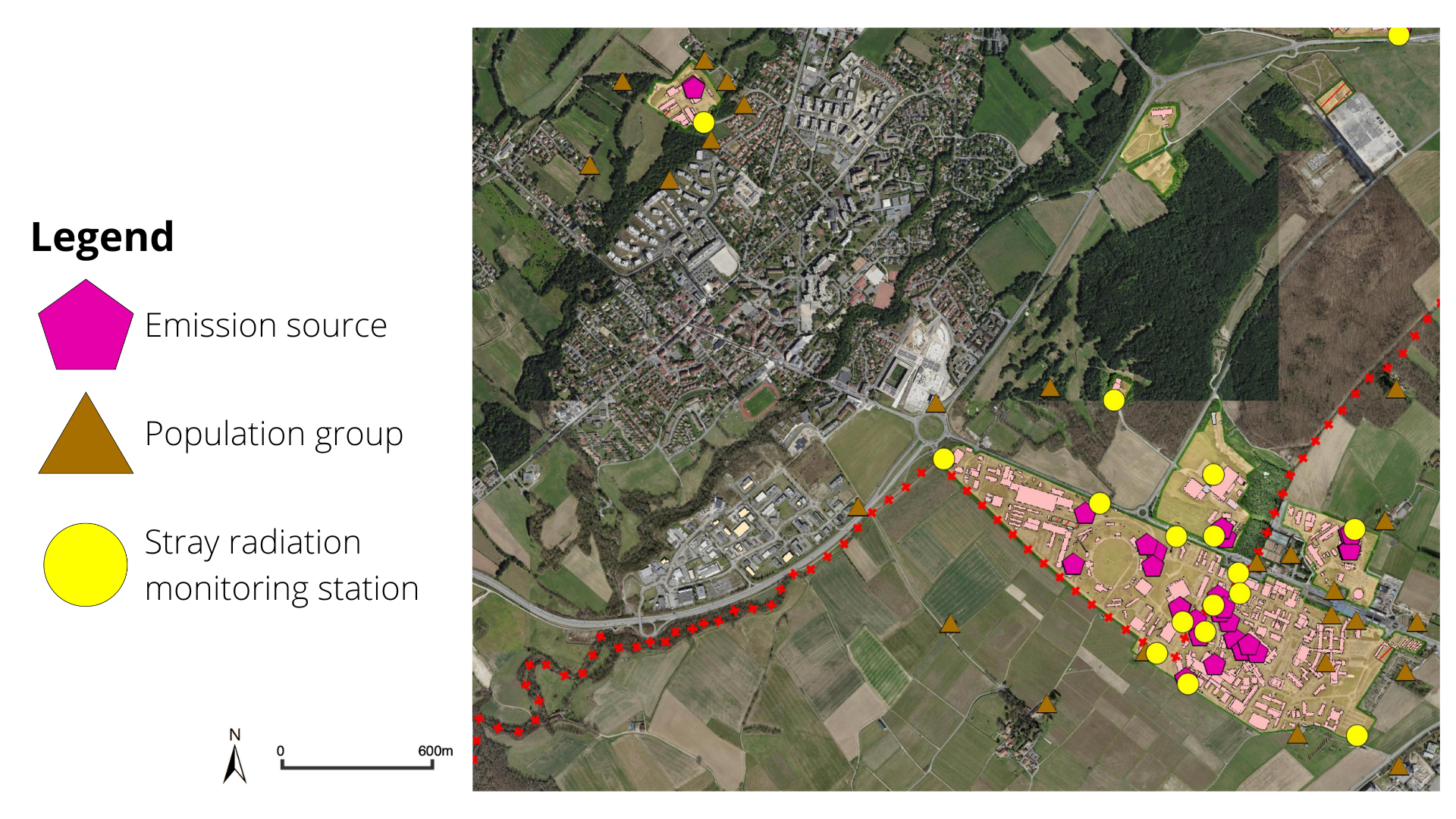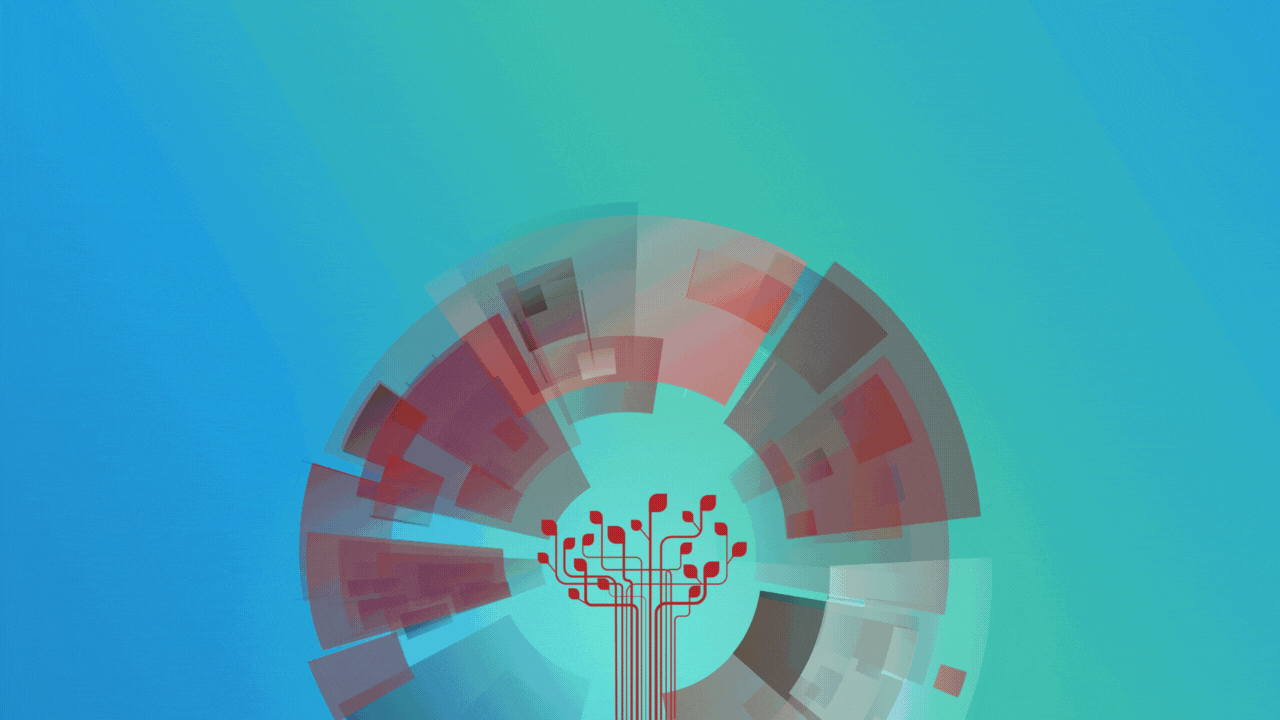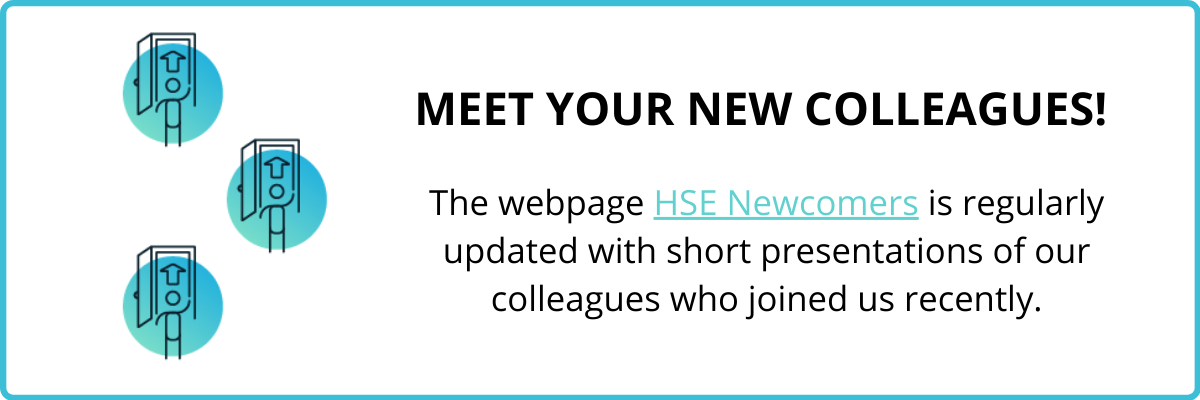
December 2022
Welcome to the HSE Newsletter, the second in a series to be published at least twice a year and featuring some selected highlights for the HSE Unit. You can read the first edition here.
We thank the contributors and encourage anyone who has a newsworthy story to share it with us at hse-comms@cern.ch. We will then publish it on the most appropriate channel, including the CERN Bulletin or the HSE website.
A PDF-version of this newsletter is available on EDMS.
Happy reading!
Contents
- A new web application for RP screening measurements
- When a flood springs unexpectedly, it’s all hands on deck
- Noisy summer heat waves
- A new Safety rule on magnetic fields at CERN
- Assessing seismic safety of CERN's installations
- A new process to assess radiological environmental impact
- An intensive training for the FRS watch managers and fire officers
- The weird and wonderful world of e-groups: designing a new framework for their management in HSE
- Behind the scenes of the ATSR 2022 conference
- HSE newcomers
A new web application for RP screening measurements
The scientific community is increasingly interested in the development of innovative radiopharmaceuticals with promising characteristics for applications in nuclear medicine and cancer treatment and to offer personalised medicine with a theranostic approach. An increasing number of "unconventional" radionuclides have thus been recently produced at CERN's MEDICIS, nTOF or ISOLDE facilities. However, as science is moving faster than the applicable regulations, there are currently no established national or international measurement guidelines to assess the quantity of radioactivity inside the body in case of incidental intake of these exotic radionuclides.
Click here to read more
The Competence Centre for Internal Dosimetry, born from the collaboration between CERN and the Institute of Radiation Physics (IRA) of the Lausanne University Hospital (CHUV), is thus working on new measurement procedures to address this problem. In the framework of this collaboration, in vivo and in vitro measurement techniques are being developed since 2020 for isotopes that can be produced at CERN and for which no measurement guidelines are currently available.
In addition, to effectively measure and store data linked to a potential internal exposure, the Dosimetry and Calibration section of the CERN Radiation Protection group (HSE-RP-DC) worked in close collaboration with the HSE Safety Computing section of the Transversal Services group (HSE-TS-CS) to develop a web application that allows workers to carry out these screening measurements by themselves: this is done directly at the worksites, using conventional handheld radiation protection instruments. This application (which you can see modelled in the embedded video below) guides the workers through a simple and intuitive procedure to enable them to perform screening measurements for a large selection of radionuclides. As this application is flexible, new radioisotopes of interest could still be added in the future. The results of the measurements are recorded in the CERN dosimetry database, where they will be saved automatically in order to avoid any loss of data and can then be easily consulted and analysed by the Dosimetry service. The Dosimetry service is also automatically notified in the event of a positive result (if the screening measurement threshold is exceeded) and will immediately take action by sending radiation protection experts in the area to take care of the concerned worker.
While the risk of internal exposure at CERN is very limited, the new application is of interest to the medical world. Pierre Carbonez of the HSE-RP group, supervisor of Siria Medici who developed this web application during her fellowship at CERN explains: “This app has been presented at various conferences and has raised marked interest among the medical community for use in different medical fields, such as calculating the time needed to release patients that underwent treatment with short-life radioactive isotopes, such as Iodine 131”.
The application is currently being deployed and tested. It is available in French and English, and accessible online, on PC or smartphone, via a web application. While it can be consulted by any member of CERN personnel holding a dosimeter, it will be of interest for personnel working in areas involving contamination risks: this applies to personnel of ISOLDE/MEDICIS and to anyone involved in destructive work on activated material such as the CERN waste treatment centre and some other dedicated workplaces. In parallel, the interface of the CERN dosimetry database has also been adapted to allow the visualisation of the results obtained with this new application: the Dosimetry Service can now directly analyse the data and extract statistics concerning the internal contamination of workers. In addition, having the data centralised in the database allows us to fulfil our legal obligation to transfer data to our Host States more efficiently.
When a flood springs unexpectedly, it’s all hands on deck
It’s Thursday, 13 October, lunchtime. The CERN & Environment workshop is in full swing, with people looking forward to their lunch break when Jean Audrain, CERN Fire and Rescue Service on-duty fire officer receives a call reporting “an important water leak’ near the Saint-Genis-Pouilly border. Jean describes the next steps: “when we arrived at the site of the incident, our first action was to check whether the leak had impacted CERN buildings or installations. Once this risk had been removed, we were able to focus on the impact of the leak on the public road. We set up a security perimeter and were able to identify the source of the leak. On our advice, the border guards took the decision to close the border in both directions because the risk of the roadway collapsing could not be completely ruled out.”
Click here to read more
The extent of the flooding and potential impact on CERN’s installations, including to sanitary water supply is such that the CERN Crisis Management Team (CMT) is activated. Pierre Bonnal, head of the CERN Fire and Rescue Service (CFRS) and the CMT emergency services coordinator is at Restaurant 2. He is sharing a meal with the watch managers on the first day of their training session. When he receives a mobile phone notification from the CMT “Mobicall”: he promptly hands his untouched lunch over to his deputy Marc Nas and is thus one of the first people alongside our HSE Unit Head, Benoît Delille, at the CCC, where the CMT meets.
“Given the impressive scale of the water leak, as shown in the pictures below, I was impressed at the flawless manner in which all services worked together towards a prompt resolution without major damage”, says Pierre.
The services involved were not only the CFRS, but also the EN Department, as well as the border guards and the Services Industriels de Genève (SIG), that own the network where the leak occurred.
All was repaired and back to normal within two hours. As precautionary measure, the drinking of tap water remained forbidden on parts of the site until the next day, when analyses carried out by the HSE Environmental Protection Group and the SIG showed that it had not been affected by the leak.
 |
Noisy summer heat waves
As neighbourhoods move closer to CERN installations, noise originating from these installations can become a problem.
The 2022 summer heat wave had an unexpected side effect in the local area with many registered reports of excessive noise in the vicinity of CERN’s installations. When temperatures rise, CERN’s cooling demands increase and so does the noise from chillers and cooling towers. It goes without saying that neighbours are also more likely to sleep with open windows, increasing the risk of being disturbed by noise emitted by CERN facilities.
Click here to read more
Earlier, in the spring, complaints had been received from CERN’s neighbours located at Park Jean Monnet about excessive noise levels at LHC Point 2.
CERN is committed to restricting noise at its perimeter. To do so, a Noise Policy was established taking the noise levels generated in 2018 as a baseline for managing environmental noise. Jordan Minier, acoustics engineer and Guillaume Redares (TTE) of the ENV group, assisted by colleagues including Igor Neuhold (HSE-OHS) and Jean-Paul Bergoeing (HSE-ENV) as well as an external consultant (Delhom Acoustique) carry out noise measurements and develop 3D noise models to identify, understand and tackle noise sources at CERN.
Two automatic noise-monitoring systems (see picture 1) were installed at BA4 in spring 2022 to control and prevent increases in noise levels. This enabled, for example, the quick identification of a chiller causing excessive noise levels due to a faulty compressor.
 |
Noise monitoring was also put in place at LHC Point 2, following the claims from the Park Monnet residents. Two noise sources were identified: an electric transformer for SPS injection and the cooling towers. An action-plan was implemented on the cooling towers: change of the operation mode and replacement of a tower fan. A study is ongoing to mitigate the electric transformer with an acoustic screen.
Additionally, 130 noise characterisations (see picture 2) of existing equipment were carried out at LHC points 2 and 4. The data will be used as input for CERN's 3D noise models (see picture 3). Once noise models are constructed, it is easy to determine the contribution of each source at sensitive receptors (residents) and define noise control mitigation for the most significant noise sources. It is also a powerful tool to predict noise from future projects, such as HiLumi or SXSN5.
Finally, the annual survey to control CERN’s noise footprint was carried out in September with over 160 noise measurements during day and night at the site limits. The monitoring reports will be sent to French local authorities.
A new Safety rule on magnetic fields at CERN
Magnetic fields are frequently used in modern technology. At CERN, magnetic fields are used in the accelerators to bend the particles’ trajectory and to keep the beam stable and precisely aligned. In the LHC, insertion magnets squeeze the beam before it enters the detector and LHC detector magnets assist in the measurement of particles or the minimization of the particle spread. The magnetic fields stemming from accelerator or experimental magnets range from 0.1 up to 10 T.
Click here to read more
Magnets are also used in laboratories and other technical facilities such as the magnet assembly hall, power converter buildings or workshops. Detailed magnetic field maps are established in the installations concerned.
Exposure to magnetic fields of a certain magnitude can have adverse health effects. Direct temporary, sensory effects (e.g. vertigo, nausea, metallic taste or altered blood pressure) may occur when people move around in the magnetic fields.
Indirect effects may also occur due to the presence of certain objects in the magnetic field: loose ferromagnetic objects may become dangerous projectiles and the field may interfere with Active Implanted Medical Devices (AIMD) (e.g. pacemakers or defibrillators, infusion pumps or cochlear implants) or with other implants including piercings.
The measures taken by CERN to protect visitors and workers from the adverse health effects of magnetic fields are currently defined in Safety Instruction IS36 dating back to 2005.
According to the Safety rules revision roadmap, that sets out priorities and timelines for the replacement of Safety rules dating back to 2006 or before (a time where another Safety rules system was in place), the review of IS36 was set for this year.
The new rule will be part of a Safety rules cluster covering all measures to protect workers and visitors from risks of exposure to non-ionising radiation (electromagnetic waves, static magnetic fields and ultra-violet light) generated by CERN installations or activities.
The concept of the rule was developed jointly between the HSE Unit and an expert from the ATS Sector, Marco Buzio, and an essential collaboration to understand the challenges regarding the implementation of the European regulatory framework at CERN. The new rule will define exposure limit values for different categories of persons (visitors, persons at risk or persons subject to significant exposure). The exposure limit for visitors will go up from 10mT to 40 mT in line with best practice in Europe. It will also define action limits where risk assessment will need to be carried out, in particular to ensure that there is no risk from tooling that become projectiles.
A significant change compared to IS 36 will be the requirement that buildings or areas with artificial magnetic fields, generating a risk of exposure to static magnetic fields greater than or equal to 0.5 mT are delimited and that access to them is, in principle, forbidden for any person wearing AIMD. This requirement has been introduced in the light of return of experience from ATS.
The new rule will be accompanied by a Safety guideline providing additional technical information and advice on how to best implement these new requirements. Its concept has been presented and endorsed by the main stakeholders, ATS, DSOC and SAPOCO in particular and is now in the final stages of drafting. The Safety Training section (HSE-TS-ST) is also working to be ready with the required course when the rule comes into force, early next year.
The Safety rules team already embarks on developing a new rule on the protection from the risks stemming from lasers.
Assessing seismic safety of CERN’s installations
Surrounded by the Alps, the Jura and the Lake Geneva, CERN is located in a particularly complex geological setting, which also happens to be a non-negligible earthquake prone region. Compared to the rest of Europe, Switzerland has a moderate seismic risk, but the Swiss Seismological Service (SED) indicates that earthquake activity is not evenly distributed throughout the country: the Valais region is the most prone region, followed by Basel and Geneva.
 |
|
| Recent earthquakes in the las 10 years in the CERN region (ESRI database) |
Click here to read more
To take account of the seismic risk, CERN has, since 2021, been running dynamic seismic analysis on the concrete blocks located in most of the experimental areas which are used to shield people from ionising radiation, in order to be able to predict the mechanical behaviour of this type of structures.
This project is being driven jointly by Luca Sironi (SCE-SAM-TG) and Marco Andreini (HSE-OHS-IB), alongside the Beams Department. Other renowned institutes such as California Institute of Technology (Caltech), Swiss Federal Institute of Technology Lausanne (EPFL), University of Montpellier and the European Centre for Training and Research in Earthquake Engineering (EUCENTRE) also participate.
A report on the proposed methodology for CERN typical cases will soon be presented to the Management of the SCE Department and the HSE Unit. The objective is to integrate this methodology in routine operations, including in the conceptual design of new facilities or during the consolidation projects for existing ones. Having calibrated the open-source software LMGC-90 (developed by University of Montpellier) in 2021 based on experimental results collected in 2019 at EUCENTRE (Pavia-Italy), CERN is now further refining the seismic safety assessment methodology based on incremental dynamic analysis in the spirit of continuous improvement of Safety for the Laboratory. The main objective to run this analysis on real blocks configurations at the beginning of 2023.
Until now, studies were mainly theoretical and lacked the support of experimental tests. This work is now not only validated by experimentation, but can be used routinely from now on, representing a new competency at CERN. The Seismic Safety Project will now enter its next phase of development, with some case studies in the pipeline. Luca and Marco underline the potential of this research: “Thanks to the collaboration between institutions, it has been possible to work at the forefront of the research in matters of seismic safety. The research findings can be extended to similar structural typologies for other laboratories around the world.”.
A new process to assess radiological environmental impact
The operation of CERN accelerator facilities leads to atmospheric releases of radionuclides, to which members of the public can be exposed. While the dosimetric impact induced by such releases remains negligible, its evaluation is complex due to the number of facilities and the variety of “receptors”, i.e. people living or working near the CERN sites.
Click here to read more
When facilities are built or upgraded, HSE’s Radiation Protection group (HSE-RP) first estimates both atmospheric releases and dosimetric impact in a conservative way through calculations. Then, in the frame of the CERN environmental monitoring program, atmospheric releases are measured at the level of the facilities’ outlets and the dosimetric impact is evaluated and reported accordingly.
The associated evaluation methods comprise both the models for the evaluation of the dosimetric impact and the associated process (management of changes, traceability, reporting, etc.).
They are discussed with the competent Host State authorities in the framework of the tripartite agreement on radiation protection and radiation safety. In the context of these discussions the models have recently been updated. Following this update CERN decided, in 2022, to repeat all related calculations performed over the past decades with the new method to bring the results up-to-date.
The authorities further required that all groups located near the Organization’s sites be considered, not just the most exposed groups, as was the case in the past. With about 40 sources and 120 receptors, this represented an increase in number of combinations to be evaluated to some 5000.
 |
|
|
GIS portal extract showing sources and receptors in the vicinity of CERN installations. |
This drastic increase in calculations to perform and in values to process was already challenging, and other parameters also had to be considered, such as: the evolution of facilities; the construction, demolition, or transformation of public buildings; updates of models; or consideration of new meteorological data. Applying this holistic approach to the current process would have been unrealistic. It was therefore crucial for HSE-RP to develop a time-efficient process to cope with all possible changes on a far larger scale.
The first step was to adapt the GIS Portal to integrate all facilities and population groups over a 10x10 kilometre area. For the sake of pragmatism, areas were divided by type (residential, working, and leisure) and related groups’ specificities such as occupancy, ingestion and shielding factors were homogenised. To further decrease computation time, a dedicated server was made available and calculations were parallelised. Finally, new scripts were developed to efficiently process a hundred million values and identify and aggregate the pertinent data.
This new evaluation process is now in use as part of the environmental monitoring programme. It was presented to the Host State authorities on 11 October 2022 and the team now awaits their feedback.
An intensive training for the FRS watch managers and fire officers
Continuous training is essential for the FRS personnel. Each year, CERN Firefighters take part in some 10 to 15 day-long trainings as part of their learning curriculum. On 13 and 14 October, watch managers and fire officers came together for an incident-command team building exercise. Originally intended to take place off-site the exercise was finally carried out at CERN, but with no loss in quality or experience!
Click here to read more
The first exercise was a fire simulation in the specially designed containers at the CERN Safety Training Centre. The activity consisted of simulating a fire in Point 5 (CMS) and determining whether the configuration and established first-response team present was optimal in the face the tremendous blaze set up by colleagues. The second exercise took place at Point 6, involving a chemical and radiological situation where a container holding a product with a simulated emission of 500 µsV/hour had to be moved and secured.
Such training sessions are important for the CFRS from a team building perspective given the rich diversity of its members as an opportunity to generate new ideas and ways of thinking.
This particular exercise involved a lot of adaptability and creative thinking, organization and team skills to find the best approach for a safe manoeuver. The objective was not so much about technical skills and know how, rather an opportunity to coordinate, communicate, share feedback and ideas to further develop the strong team spirit that drives the FRS in their everyday activities.
 |
The weird and wonderful world of e-groups: designing a new framework for their management in HSE
An e-group is a feature which allows users to create, post, comment to and read from their own interest-specific forums. E-groups allow you to send email messages to a group of people using just one email address instead of a list of addresses, thus saving time and avoiding errors.
Have you ever wondered how many e-groups you are included in? A short survey showed that we all belong to many e-groups, between 200 and 1000 depending on the person. Initially, e-groups were intended solely for e-mailing, but now they increasingly allow you to manage access to different IT tools or platforms.
Click here to read more
Given the importance of e-groups in our daily working lives, it is important to avoid current pitfalls, such as:
- not being able to see the list of members,
- being unable to use the e-group that would be useful,
- using e-groups with members that left CERN a long time ago,
- using an e-group with the “wrong” members.
To avoid these, it is necessary to have a good management and use of e-groups, with a minimum of principles and recommendations. This is what the future procedure for managing e-groups in HSE proposes.
It will help the creator of an e-group to make educated choices as to:
- how to name it,
- whether it should it be static or dynamic,
- for what purpose to use it: mailing or access,
- the possibility to self-register in the e-group,
- who can use it, and
- what are the responsibilities of the owners of e-groups, and their administrators.
This will also avoid using default values without really knowing what this will entail. After six months of discussions with stakeholders, additions, changes and simplifications of the basic principles and recommendations, the procedure developed by Francois Angerand (HSE-TS-SPP) with the support of Ulla Tihinen (HSE-TS-AS) has now been tested, verified and presented to the Head of the HSE unit.
There are still a few steps to complete before its publication and implementation. Stay tuned and count on our support when we reach that phase!
Behind the scenes of the ATSR 2022 conference
The 27th Radiation Protection conference (ATSR) took place on 20-22 September. We met with Valérie Tromel from HSE-RP group and her organising team colleagues to find out more about the event, behind the scenes.
A big thank you to Benoit Delille for his opening remarks and overall support, and to all the people from CERN who took part in this conference, either by participation or by giving quality presentations.
This video was filmed in Restaurant 1 with the natural ambient noise that goes with it – while we strived to minimise it, we apologise in advance for the intrusion of other noise which we hope will not impact your enjoyment of this interview: think of it as a fully immersive experience!
The video has subtitles available in English. You can find them in the Settings (cogwheel).
HSE Newcomers

